Small overlap front: driver-side
Rating applies to 2007-12 models built after January 2007
Tested vehicle: 2012 Lincoln MKZ 4-door
The Lincoln MKZ was introduced in the 2006 model year, when it was named the Lincoln Zephyr. The name was changed to MKZ in 2007.
Beginning with 2007 models manufactured after January 2007, structural reinforcements were added to the floor ahead of the front seats, and a hard plastic "ramp" bolted underneath the carpeting near the base of the accelerator pedal was modified to improve occupant protection in frontal crashes with moderate overlap. (Note: information about when a specific vehicle was manufactured is on the certification label typically affixed to the car on or near the driver door.)
| Evaluation criteria | Rating |
|---|---|
| Structure and safety cage | |
| Driver injury measures | |
| Head/neck | |
| Chest | |
| Hip/thigh | |
| Lower leg/foot | |
| Driver restraints and dummy kinematics The dummy’s head and chest completely missed the frontal airbag as the steering column moved 18 cm to the right. The side curtain airbag deployed but does not have sufficient forward coverage to protect the head from contact with side structure and outside objects. The side torso airbag also deployed. | |

Action shot taken during the small overlap frontal crash test.

The dummy's position in relation to the door frame, steering wheel, and instrument panel after the crash test indicates that the driver's survival space wasn't maintained well.
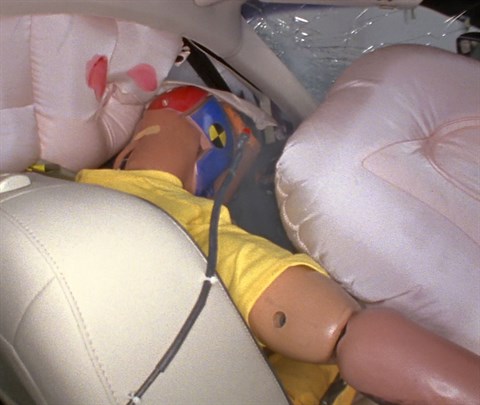
During the crash, the steering column moved so far to the right that the dummy's head and chest completely missed contacting the frontal airbag.

Despite extensive intrusion of the door hinge pillar, driver footwell, and instrument panel, risk of injury was moderate and limited to the left knee.
Moderate overlap front: original test
Rating applies to 2007-12 models built after January 2007
Tested vehicle: 2007 Ford Fusion SE 4-door
The Ford Fusion, Mercury Milan, and Lincoln Zephyr were introduced in the 2006 model year. The Zephyr was renamed the MKZ beginning with 2007 models. All three cars were restyled beginning with the 2010 model year, and the Mercury Milan was discontinued after the 2010 model year.
Beginning with 2007 models manufactured after January 2007, structural reinforcements were added to the floor ahead of the front seats, and the hard plastic "ramp" bolted underneath the carpeting near the base of the accelerator pedal was modified to improve occupant protection in frontal offset crashes. In addition, the standard side airbags were changed so that they would deploy in severe frontal offset crashes. (Note: information about when a specific vehicle was manufactured is on the certification label typically affixed to the car on or near the driver door.)
The tested car was manufactured after all modifications had been made.
| Evaluation criteria | Rating |
|---|---|
| Overall evaluation | |
| Structure and safety cage | |
| Driver injury measures | |
| Head/neck | |
| Chest | |
| Leg/foot, left | |
| Leg/foot, right | |
| Driver restraints and dummy kinematics | |

Action shot taken during the frontal offset crash test.

The dummy's position in relation to the steering wheel and instrument panel after the crash test indicates that the driver's survival space was maintained well.
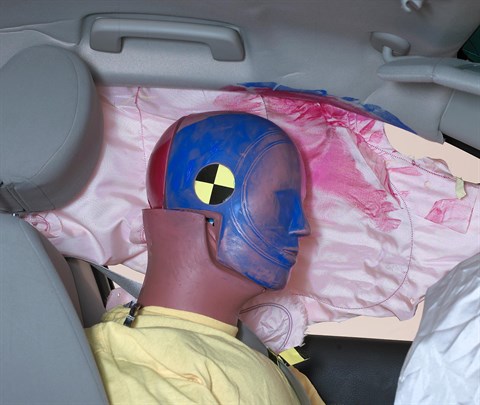
Smeared greasepaint indicates where the dummy's head brushed across the side curtain airbag and hit the roof rail during rebound, producing high forces on the neck.

Postcrash photo with carpeting removed indicating the modified "ramp" intended to reduce loading on the right leg and ankle in frontal offset crashes.
Rating applies to 2007 models built before February 2007
Tested vehicle: 2006 Ford Fusion SE 4-door
The Ford Fusion, Mercury Milan, and Lincoln Zephyr were introduced in the 2006 model year. The Zephyr was renamed the MKZ beginning with 2007 models.
All 2006-07 Fusion, Milan, and Zephyr/MKZ models manufactured after January 2006 include a hard plastic "ramp" bolted above or below the carpeting near the base of the accelerator pedal designed to decrease right leg and foot injury risk in frontal offset crashes (note: information about when a specific vehicle was manufactured is on the certification label typically affixed to the car on or near the driver door).
The Insurance Institute for Highway Safety has evaluated the crashworthiness of a Fusion with the added part in a 40 mph frontal offset crash test into a deformable barrier.
| Evaluation criteria | Rating |
|---|---|
| Overall evaluation | |
| Structure and safety cage | |
| Driver injury measures | |
| Head/neck | |
| Chest | |
| Leg/foot, left | |
| Leg/foot, right | |
| Driver restraints and dummy kinematics | |

Action shot taken during the frontal offset crash test.

The dummy's position in relation to the steering wheel and instrument panel after the crash test indicates that the driver's survival space was maintained well.
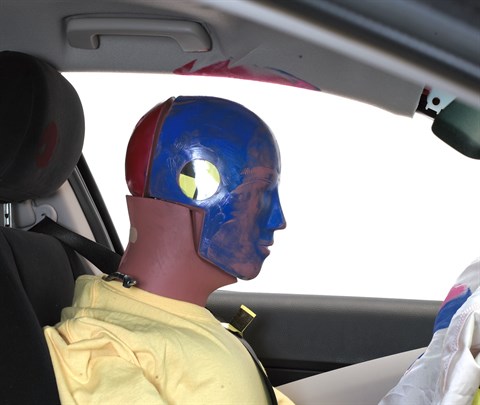
Smeared greasepaint indicates where the dummy's head hit the roof rail during rebound. Head acceleration from this hit was low.
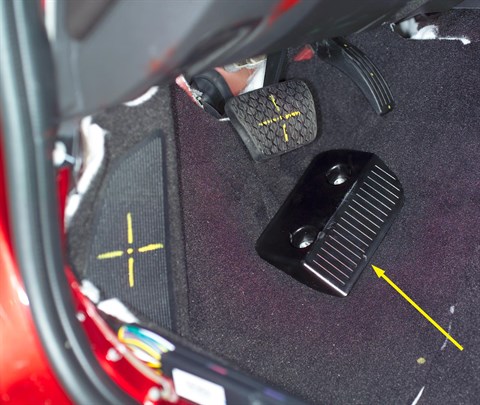
Postcrash photo indicating the added "ramp" intended to reduce loading on the right leg and foot in frontal offset crashes. (Cars built later in 2006 have the ramp hidden underneath the carpeting; Ford says hiding it does not affect performance.)
Side: original test
Rating applies to 2007-09 models
Tested vehicle: 2006 Lincoln Zephyr 4-door with standard front and rear head curtain airbags and standard front seat-mounted torso airbags
The Lincoln Zephyr was introduced in the 2006 model year and renamed the MKZ beginning with the 2007 model year.
| Evaluation criteria | Rating |
|---|---|
| Overall evaluation | |
| Structure and safety cage | |
| Driver injury measures | |
| Head/neck | |
| Torso | |
| Pelvis/leg | |
| Driver head protection | |
| Rear passenger injury measures | |
| Head/neck | |
| Torso | |
| Pelvis/leg | |
| Rear passenger head protection | |
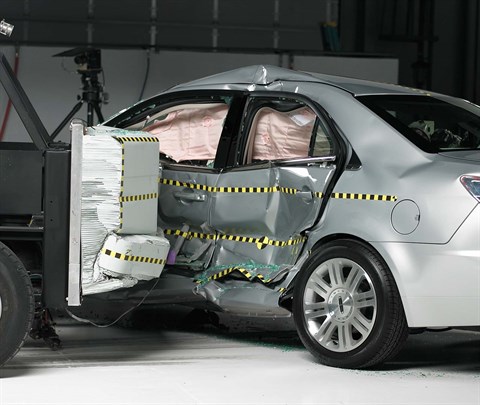
View of the vehicle and barrier just after the crash test.
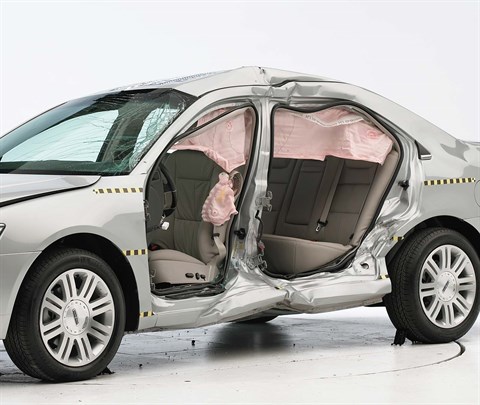
View of the vehicle after the crash with doors removed, showing the side airbags and damage to the occupant compartment.
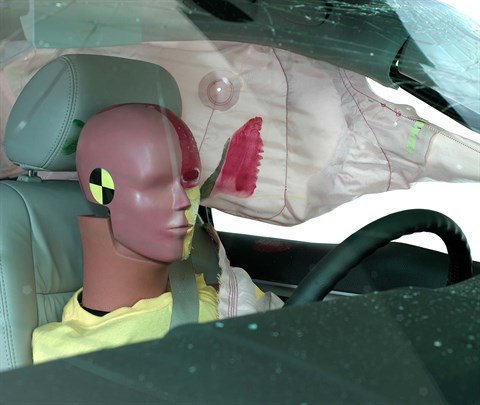
Smeared greasepaint shows where the driver dummy's head was protected from being hit by hard structures by the side curtain airbag.
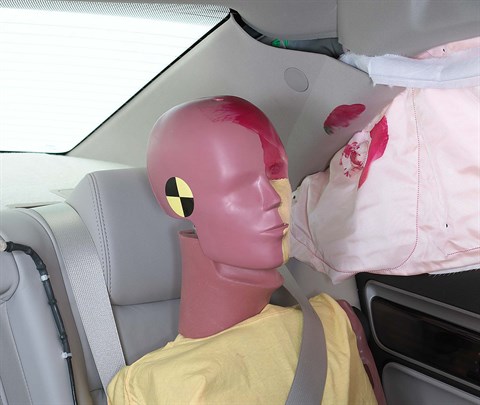
Smeared greasepaint shows where the rear passenger dummy’s head was protected by the side airbag.
Roof strength
Rating applies to 2007-10 models built before May 2010
Tested vehicle: 2010 Ford Fusion SE 4-door
| Overall evaluation | |
|---|---|
| Curb weight | 3,394 lbs |
| Peak force | 11,300 lbs |
| Strength-to-weight ratio | 3.33 |
Head restraints & seats
Seat type: Manual-power cloth seats
| Overall evaluation | |
|---|---|
| Dynamic rating | |
| Seat/head restraint geometry |
About the head restraint & seat test
Currently, IIHS tests apply only to front seats.
